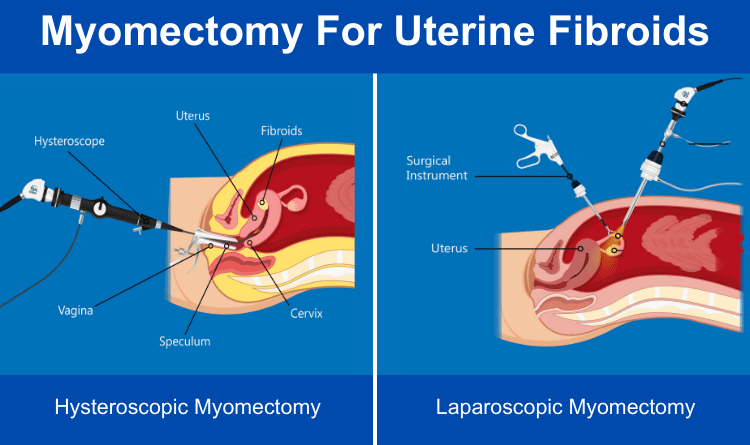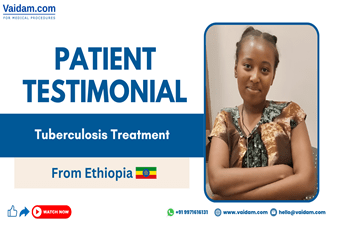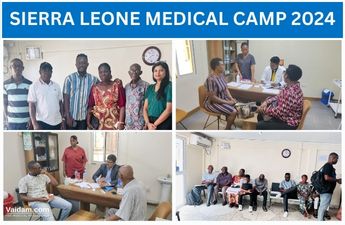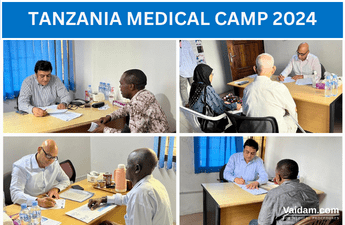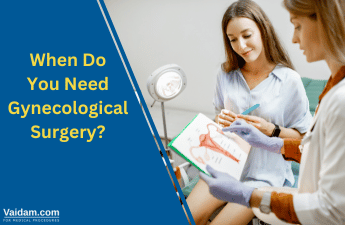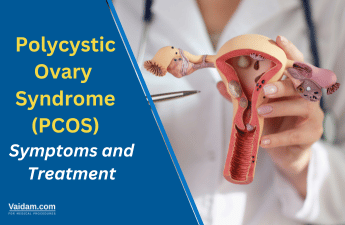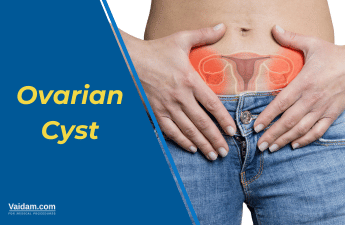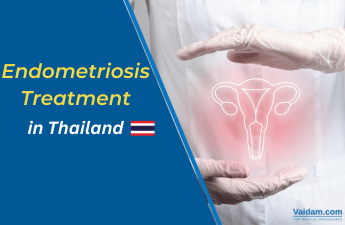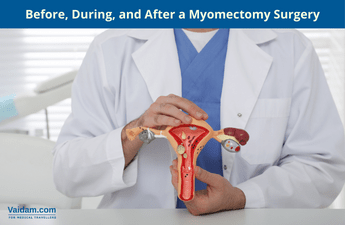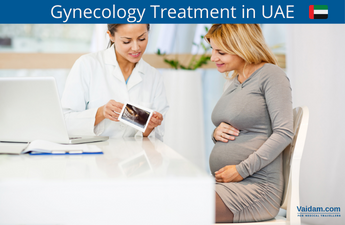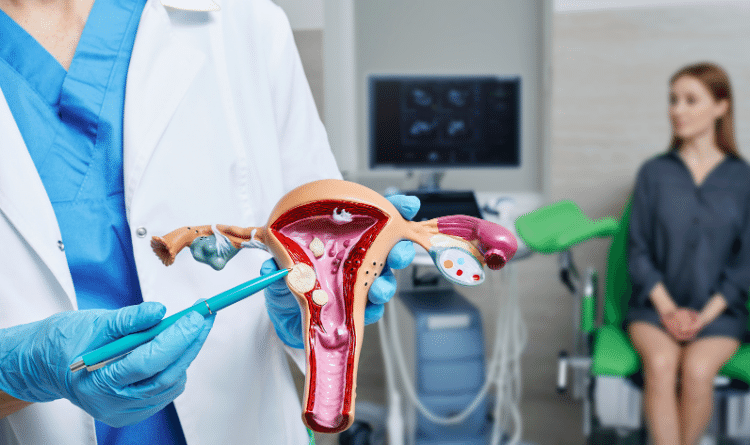
Uterine fibroid is a common gynecological disease that affects the uterus. The occurrence of fibroids has grown over the past few years. According to various reports, over 9 million women are diagnosed annually with uterine fibroids.
Not all uterine fibroids require treatment. The ones that do are easily managed with the help of medicines and surgeries like myomectomy.
The cost of treating uterine fibroids depends on factors such as the country you opt for, the kind of surgery you require, and the hospital you choose. Various countries offer cost-effective treatment for uterine fibroids.
However, it becomes necessary to get the treatment done by a skilled gynecologist. Countries India, Germany, Thailand, Turkey, and the United Arab Emirates are home to some of the best gynecologists.
Read the blog further to understand uterine fibroids, their symptoms, causes, and treatment.
Get in Touch with Medical Experts
What are Uterine Fibroids?
Fibroids are the growth of fibrous connective tissue and smooth muscle cells. These are primarily noncancerous and do not increase uterine cancer risk.
Most women get fibroids during their childbearing age. Most of the fibroids shrink and resolve on their own after menopause.
Common locations where uterine fibroids develop are inside the uterus, within the uterus wall, and on the outer surface of the uterus.
Uterine fibroids can occur as a single nodule or in a group. Their size ranges from 1 mm to 8 inches.
Risk factors for the disease include:
- Obesity
- Early onset of menstruation
- Family history
- Deficiency of vitamin D
- Low green vegetable diet
What are Common Symptoms of Uterine Fibroids?
Not all women need to experience symptoms of uterine fibroids. The symptoms appear only after the fibroids have reached a specific size. The symptoms a woman may experience from the disease will depend on the size and location of the fibroids.
Once the fibroids have grown large enough, they can show symptoms like:
- Excessive menstrual bleeding
- Pain during sex
- Frequent urination
- Lower back pain
- Chronic vaginal discharge
- Enlarged abdomen
- Difficulty in bowel movement
- Infertility
- Preterm labor
Uterine fibroids can disrupt the menstrual cycle and cause heavy periods and painful cramps. These symptoms can be managed by taking anti-inflammatory drugs and birth control pills.
What are the Different Types of Uterine Fibroids?
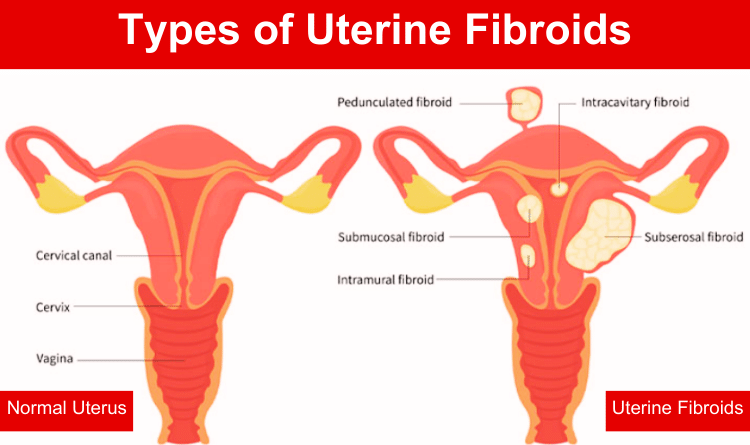
The uterus is a pear-shaped organ divided into three layers. There are four major types of uterine fibroids depending on where they occur.
- Intramural fibroids are one of the most frequently diagnosed fibroids. They occur in the uterus's front, back, and top muscle walls.
- Subserosal fibroids: These fibroids grow below the lining of the outer uterus wall and can spread to the pelvis. They tend to grow large and often cause pelvic pain.
- Submucosal fibroids are the least common fibroids growing in the uterine cavity. They cause severe symptoms like pelvic pain, heavy menstrual bleeding, and lower back pain.
- Pedunculated fibroids are mushroom-shaped fibroids with a stalk/stem attached to the uterine wall. These are further divided into pedunculated submucosal fibroids and pedunculated subserosal fibroids.
What are the Causes of Uterine Fibroids?
Uterine fibroids are uncommon in younger females that have not reached a menstruating age.
The exact reasons for uterine fibroids are still unknown. However, physicians believe that most of the fibroids have the following causes.
- Hormones: Female reproductive hormones like estrogen and progesterone help develop the uterus lining. These hormones also stimulate the growth of fibroids. Once a woman reaches the stage of menopause, the level of these hormones decreases, causing shrinkage of the fibroids.
- Genetics: The genes in fibroids differ from those present in the normal uterus muscle cells. These genetic changes can be a cause of fibroids.
- Extracellular matrix: ECM or extracellular matrix is the material that helps cells stick together. The production of ECM increases in uterine fibroids, making them fibrous.
How are Uterine Fibroids Diagnosed?
Most of the uterine fibroids are detected during regular pelvic exams. The healthcare provider looks for symptoms like abnormal menstruation, heavy bleeding, abdominal swelling, and pelvic pain.
If these symptoms are present, they may further investigate using various diagnostic tests.
- Ultrasound is one of the best and most feasible ways to diagnose uterine fibroids. The technician moves the transducer and captures images of the uterus from various angles. It helps in finding the location and measuring the size of the fibroids.
- MRI: A magnetic resonance imaging scan provides a clear image of the fibroids. It is the most accurate way to diagnose uterine fibroids.
- Hysterosonography: A saline infusion sonogram or hysterosonography uses saline to expand the uterus cavity. It makes it easier to get images of the lining of the uterus and diagnose submucosal fibroids.
- Hysteroscopy: The imaging test involves inserting the hysteroscope (small lighted telescope) into the uterus. The doctor then examines the walls of the uterus after expanding them with the help of saline.
- Lab tests: Uterine fibroids often cause heavy menstruation, leading to blood loss (anemia). Ruling out anemia is possible with the help of specific blood tests like the CBC.
- The physician may recommend a hysterosalpingography when infertility is a concern. The test uses dyes to mark the fallopian tubes and uterine cavity in the X-ray. Highlighting the organ helps identify if the tubes are blocked and can diagnose submucosal fibroids.
Watch the video below of Dr. Sonal Kumta, a senior Gynecologist, briefing about uterine fibroids.
How are Uterine Fibroids Treated?
There are multiple ways to treat uterine fibroids. Your treating physician will decide the best course of treatment after thoroughly evaluating your symptoms.
Watchful Waiting
- Not all fibroids show signs and symptoms. The doctor uses a wait-and-watch approach if the symptoms are mild and do not interfere with the patient's daily activities.
- Uterine fibroids are noncancerous and grow slowly or do not grow at all.
- If you are near menopause, there is a high chance that the fibroids will shrink on their own. Therefore, it requires no specific treatment.
Medicines
- Medications do not destroy the fibroids. They help regulate the hormone levels and treat the disease's associated symptoms. Once the reproductive hormones are balanced, the fibroids start shrinking.
- GnRH Agonists or gonadotropin-releasing hormone stops the production of estrogen and progesterone. This leads the patient to a temporary state of menopause. As the menstruation stops, the fibroids shrink, and anemia is also reversed.
- IUDs: Progestin-releasing intrauterine device does not shrink the fibroid but provides symptomatic relief. It helps in relieving excessive bleeding associated with the uterine fibroids.
- Other medications helpful in providing relief from the symptoms of uterine fibroids include oral contraceptives, vitamin supplements, and NSAIDs.
Surgeries
- MRI-guided focused ultrasound surgery (MRI-guided FUS) is a noninvasive procedure that does not require admitting the patient. The surgery does not involve making incisions and helps preserve the uterus. It uses high-energy sound waves to heat and destroy the fibroids.
- Uterine artery embolism: The procedure helps shrink the fibroid by blocking its blood supply. Embolic agents are tiny particles inserted in the arteries that supply blood to the fibroids.
- Radiofrequency ablation: In laparoscopic radiofrequency ablation (Lap-RFA), the surgeon uses the laparoscope to locate the fibroids. They then destroy the fibroid using small needles that emit heat. It is a minimally invasive procedure that has a shorter recovery period of 7 days.
- Hysterectomy: Fibroids tend to grow back. A hysterectomy is a surgery in which the uterus is completely removed. It is the only surgery that guarantees permanent relief from the uterine fibroids. However, the procedure has several disadvantages. You won't be able to get pregnant in the future. You may also observe vaginal dryness and a reduction in sex drive.
- Myomectomy: Also known as fibroidectomy, myomectomy is the surgical removal of fibroids. Preserving the uterus is necessary for women who wish to get pregnant in the future. Myomectomy is a surgery to remove the uterine fibroids without destroying the uterus. Multiple forms of myomectomy include laparoscopic, open, and hysteroscopic myomectomy.
What are the Complications of Uterine Fibroids?
Uterine fibroids are common benign tumors a woman can have in her childbearing age. However, the disease is not fatal and easily manageable. It does have some negative impact on the health of the patient.
Uterine fibroids lead to heavy bleeding during menstruation. The loss of blood can be so extensive that it can cause anemia. The loss of red blood cells further causes fatigue.
Other possible complications of uterine fibroids are:
- Distortion of female reproductive organ
- Infertility and other pregnancy complications
- Thromboembolism
- Painful swelling of the abdomen and pelvic region
What is the Cost of Treating Uterine Fibroids?
The treatment cost of uterine fibroids depends on various factors, including the size of the fibroids and the treatment approach used.
The uterine fibroid treatment cost in India starts from INR 1,33,000. International patients can expect this cost to be in the range of USD 2700 to 3300.
In Germany, the cost of treatment starts at USD 5,000. Turkey also offers the treatment of uterine fibroids in a similar price range.
This cost is relatively less in Thailand, averaging around USD 3,000.
Takeaway
Leiomyomas or uterine fibroids are benign fibrous growths in the uterus. Common symptoms of uterine fibroids include painful intercourse, heavy menstrual bleeding, frequent urination, pelvic pain, etc. If you have observed any of these symptoms, consulting a gynecologist becomes essential for accurate diagnosis and treatment.

